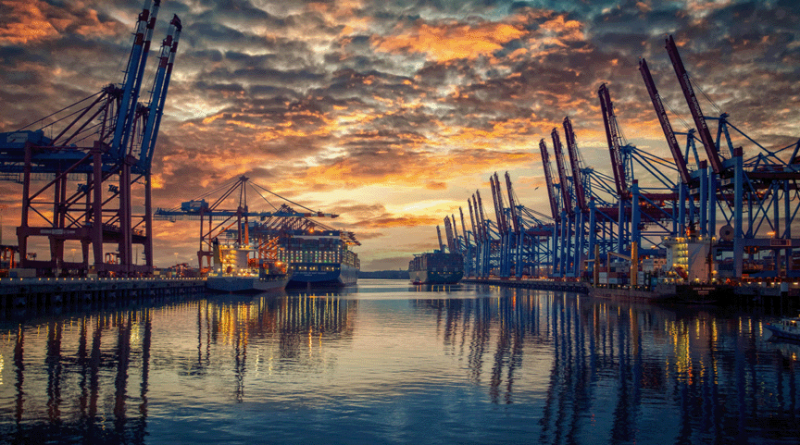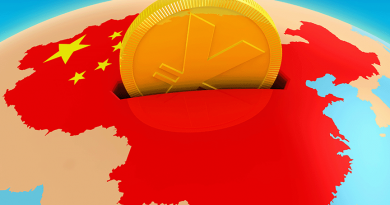The climate of trade
Dr Graham Bright is Head – Compliance & Operations at Euro Exim Bank
The British are obsessed with the blame game. Usual issues with the cost of food, electricity and gas (blaming profiteering energy companies and the Government), airport queues and cancellations (blaming COVID and non-returning staff) and disrupted channel crossings (blaming the French).
But no one can be blamed for the internationally experienced extended period of record-breaking weather, leading to wildfires, floods, loss of life and property, buckled railway tracks, airport runway damage, iPads and mobiles overheating.
Add to this the ongoing problems in world trade of rising tariffs, volume and proliferation of counterfeit goods, intellectual property theft and increasing difficulty in getting redress, and individual governments appearing more protectionist than ever.
However insular or protectionist a country may wish to be, there is no escaping globalisation, with growing interdependence of the world’s economies, cultures, and populations.
But the positive trend for international trade may soon come to an end amid tightening policies and geopolitical frictions.
Dramatic rises in crossborder trade in goods and services, technology, and flows of investment, people, and information, integration of international financial markets and the coordination of financial exchange have contributed to global trade hitting a record $7.7 trillion in first quarter of 2022.
More business is good news, but the continued upward trend for international trade may soon be compromised by tightening policies and geopolitical frictions.
Ultimately, international trade needs collaboration and friends. Especially in these times of global supply chain disruption, first caused through the covid pandemic, then with deep implications from geopolitical influences such as the Ukraine/Russia conflict and worries of long-term dependence on China.
Finding more trusted friendly trade partners these days or ‘friend-shoring’ has re-emerged as a strategic policy, even endorsed by the current US administration, to spread risk through diversification, and attempting to minimise the dramatic effects of price increases and economic disruption.
Free Trade Agreements
Conversely to implementing harsh tariffs, there is renewed interest in Free Trade Agreements – FTAs.
Hundreds currently exist, covering bilateral agreements with immediate neighbours, to regions, such as the Gulf Co-operation Council (GCC), to large cross-continent multilateral agreements such as the Comprehensive and Progressive Agreement for Trans-Pacific Partnership (CPTPP) between 11 countries, and the cross-continent AfCFTA, the world’s largest trading area since the establishment of the World Trade Organization with 54 of the 55 countries of the African Union (AU).
The FTA will encourage elimination of trade barriers, provide an economic boost to smaller companies, encourage industrialisation, promote Africa as a powerhouse for alternative supply chain resources, and encourage independent financing and development.
And, further news shows good progress with India and Africa talking to engage in another FTA, namely the Comprehensive Economic Partnership, to cover solar power with clean energy, energy security, jobs to Africa, defence trade, physical and digital infrastructure, and co-creating a start-up ecosystem.
Whilst we think today of trade wars creating economic restrictions to force change of policy, they have been implemented many times in the past
Unexpected consequences of climate change
The location and ongoing sustainability of various traditional industries may be under threat.
Take the global wine industry, with a market size of over US$400 billion in 2020, employing almost one million people, a major attractor of seasonal labour and economic contributor to over 70 countries. Whilst Italy remains top producer, over 85% of all wines are produced by 28 countries.
Looking at the globe, traditional growing regions for wine are found between 20 and 30 degrees latitude in both the northern and southern hemispheres. However, rising temperatures are causing a significant shift as some wine regions expand and others slowly migrate or even shut down, to the point where there will be a redrawing of the world’s wine regions.
I have personally witnessed temperatures of 44 degrees plus in Portugal and Spain, where entire harvests are ruined as grapes boil on the vine. But there are steps being taken to find and invest in new varieties less susceptible to heat and more resistant to rot, to meet the challenge of new regions taking advantage of favourable growing conditions.
Remarkably, England is the latest prize-winning area for white wines and Champagne, and fine wines are available from as far afield as Japan, Cuba, Ireland and Jordan.
Trade wars are not new
Whilst we think today of trade wars creating economic restrictions to force change of policy, they have been implemented many times in the past. And hard to believe previous ‘wars’ were fought over such goods as pasta, laptops, bananas, tea, opium, chicken and steel.
We may all recall the Boston Tea Party as one of the first trade wars in 1773, but subsequent initiatives were doomed to failure, such as the Embargo Act of 1807 where all goods from Britain were embargoed by the USA. With no other source of supply, prices rose domestically, and shortages were rife.
Another notable failure was during the 1928 Presidency of Herbert Hoover, attempting to help farmers by increasing tariffs on all agricultural products and protecting jobs from foreign competition.
The effect was devastating for the wrong reasons, as each former trading partner increased prices of staple products by 67%, making it uneconomic for the US to export and costly to import, all at the time of the Great Depression.
Tariffs were also responsible for The Chicken War of 1962, where US production methods had reduced prices, the EU raised tariffs to protect its local producers.
Imports from the US fell by 64%, so the US targeted tariffs on multiple industries, such as trucks to hit West German automakers like Volkswagen, brandy to impact French producers, and potato starch to damage Dutch potato farmers.
History shows that there were some benefits derived, across other industries. New assembly methods in the US allowed automakers to avoid automobile import tariffs, including the practice of sourcing parts from abroad and assembling them onshore to count as ‘Made in America’.
Environmental effect on shipping
About 90 per cent of the world’s trade is transported by ship. With rates on the increase, China’s zero-COVID policy has led to a roster system for port workers, with only half working at any one time and confined to the port, while the others are off.
However, if any infection spreads through the terminals it leads to closure, causing even greater delays, with lower handling capacity and longer waiting times for vessels at their berths.
Demand has increased for certain goods like home office supplies and electronics, many of which are made in China and other manufacturing hubs in Asia. But ports like Shanghai are still operating at low capacity, hit by worker isolation through covid with inevitable longer loading/unloading times.
This timing and manning issue has further manifest itself in revenue of shipping lines, which are making huge profits from massive demand, amid fierce competition for space on container ships.
But there is yet another factor that has recently come to play. Companies are stating their claims regarding green credentials, but unsure given current market conditions, on when and how they will fully comply and achieve their ESG goals.
One consequence is that many shipping firms are not immediately investing in newer larger vessels but using less efficient older vessels. The drawback? Complex rules on emissions may mean they have to sail slower else face penalties.
Conclusion
Finally, as we look at how the world is managing its energy, pricing and resource challenges and pledges towards zero emissions, there is a new race, namely for minerals and critical raw materials.
Wind turbines need copper, and lots of it, to move their generated electricity to substations or national grids for further distribution to houses and industry. Copper demand from green energy will grow six-fold between now and 2030 – or nine-fold if we move even faster to adopt green technologies.
The demand for mobile phones is unabating, with an exponential demand for lithium, the underlying more effective metal found in all rechargeable batteries. Again, insatiable demand for lithium could rise by a factor of 40 in the coming years.
With the worlds’ major source of supply for these precious commodities found in Chile, care will be needed in managing the extraction process, its global pricing and environmental impact.
We only have ourselves to blame if demand outstrips supply to the point of total depletion and cause environmental disaster along the way.




